|
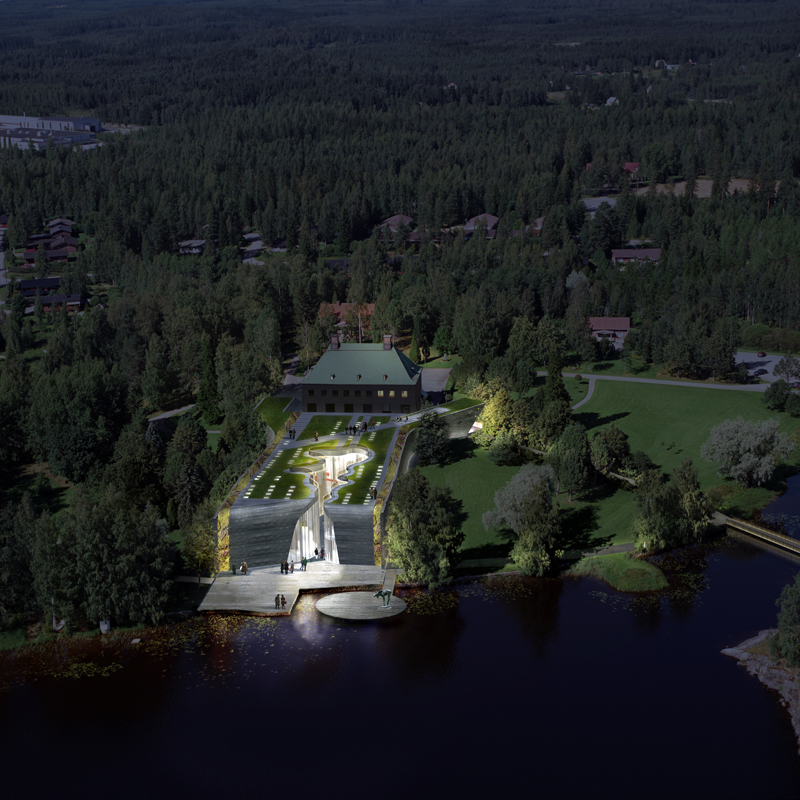

COMPETITION ENTRY
GÖSTA SERLACHIUS MUSEUM EXTENSION/ FINLAND
The Museum
will become a new and lively place for people of all generations from different
places in Finland and abroad willing to discover Finnish art traditions, visit traveling
exhibitions and attend annual art festivals.
Visitors
will be able to enjoy surrounding landscape – the magnificent lake view and
islands, Old Park, historic Joenniemi Manor and the new volume of museum extension
- GÖSTA ARTROCK.
Two of
Finnish landscape elements - a rock and a lake - create poetic concept of the
new building. The extension volume emerge from ground and continues landscape
around the historic Manor House preserving structure and basic elements of the
park - lakeside line, old trees and two symmetrical plant-lined paths between
the main building and the lake.
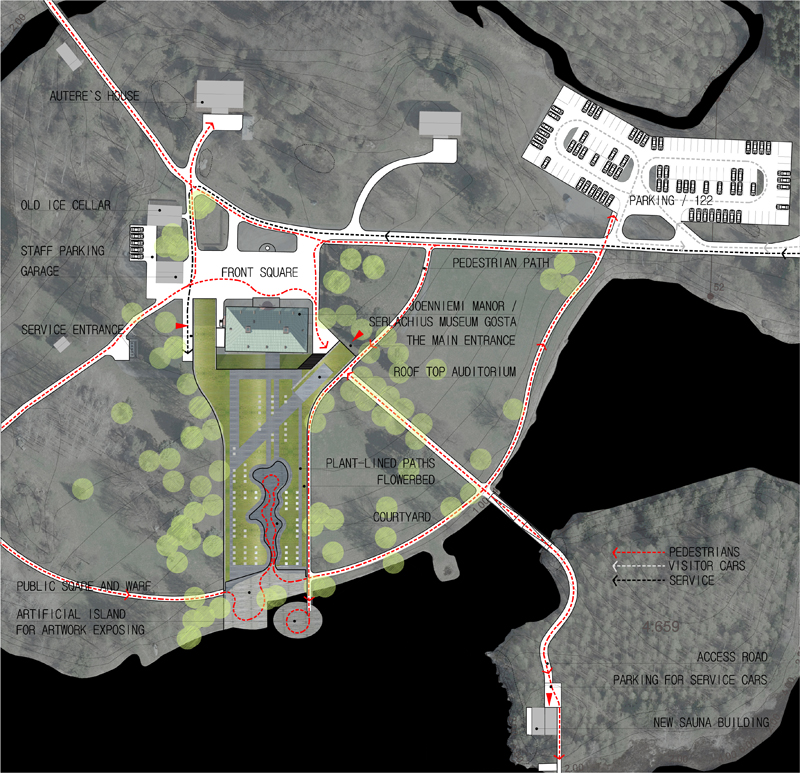
The
Serlachius museum territory has historic and archeological values which are
being preserved within the proposal. These components form basis of the
territory layout – the main access from the East and different flows -
visitors, transport, service, staff etc. By entering the Museum territory the
visitors slowly open up a view to the old Manor House and the new
representative entrance. The extension volume treated as an artificial
landscape element merge into the park view behind the old trees reminding a huge
rock wall.
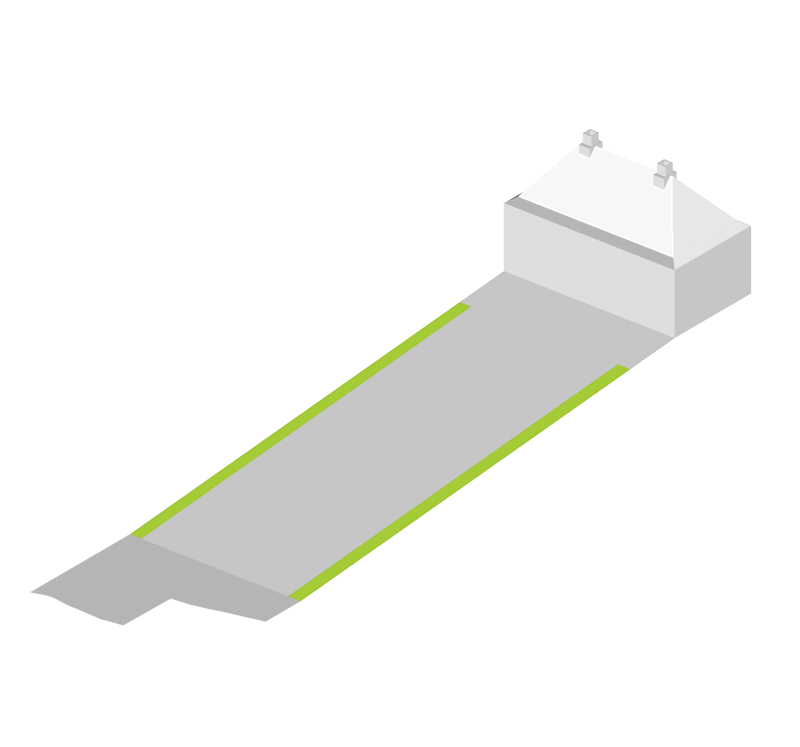 Planning of the proposal is
based on courtyard principle opening grate views through the courtyard towards
the lake and providing good visibility and orientation within the building. Organic
shaped space in the hearth of the building is a new public Plaza - open and accessible
for everyone. Life in the space will be animated not only by artworks and
visitors in exhibition halls but also by the Museum Restaurant which has a direct
connection to the inner yard. Planning of the proposal is
based on courtyard principle opening grate views through the courtyard towards
the lake and providing good visibility and orientation within the building. Organic
shaped space in the hearth of the building is a new public Plaza - open and accessible
for everyone. Life in the space will be animated not only by artworks and
visitors in exhibition halls but also by the Museum Restaurant which has a direct
connection to the inner yard.
The lobby is conceived as a
spatial continuation of the Plaza. The main foyer generously arranges old and
new part of the Museum giving space for Museum Shop and Ticket counters, as well
as providing extra space for exhibitions in lobby. A flat ramp leads people down
to the main traveling exhibition spaces and a Museum Restaurant in the lower
level.

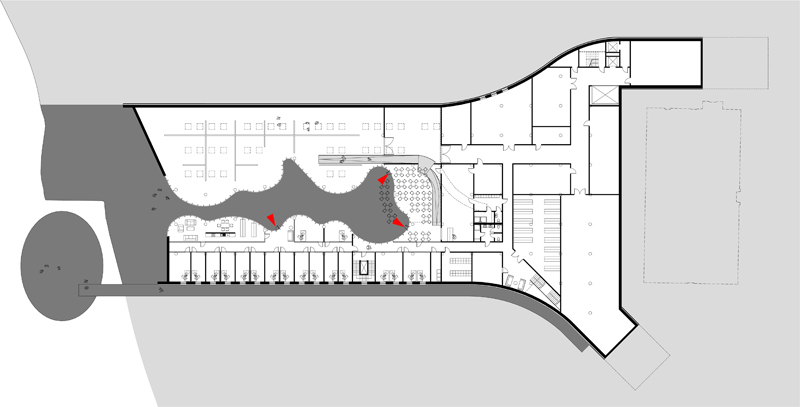
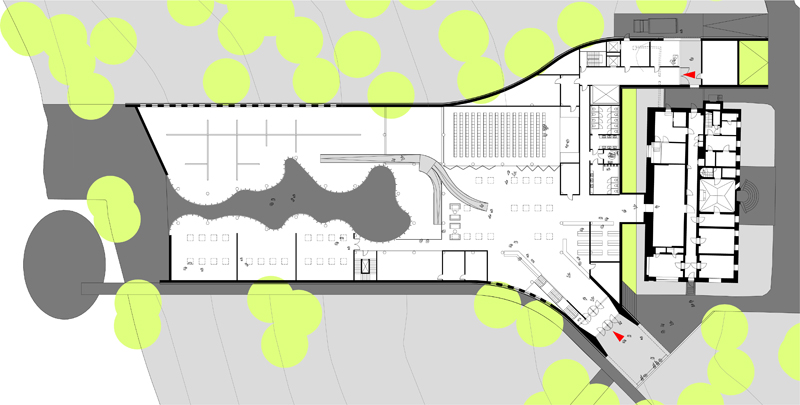
 All public
premises have the optimal 4 m ceiling height with exception of 9 m for both traveling
exhibition halls as required. The largest open planning exhibition hall uses
East-faced courtyard glass walls as well as skylights to produce optimal
lighting. More intimate is a collections gallery on the entrance level. All public
premises have the optimal 4 m ceiling height with exception of 9 m for both traveling
exhibition halls as required. The largest open planning exhibition hall uses
East-faced courtyard glass walls as well as skylights to produce optimal
lighting. More intimate is a collections gallery on the entrance level.
The intent of the proposal
is to use local materials like stone and timber for facade cover and indoor
spaces, as well as for pathways and public squares on roof top. The structure
of the new volume consists of concrete bearing walls and columns covered with
steal beams up to 15 meter span. The inner yard is glassed in full height and a
special solar glass is used on the West facade. Stone plates in a special
layout are used in the East and West facades and have a reference to a natural
solid rock wall of surrounding territory. Openings for regular office windows
in the East wall are made in the load bearing concrete wall therefore the stone
lace is free of regularity. Pattern of the stone facades are inspired by lake
and earth structure of surrounding landscape.

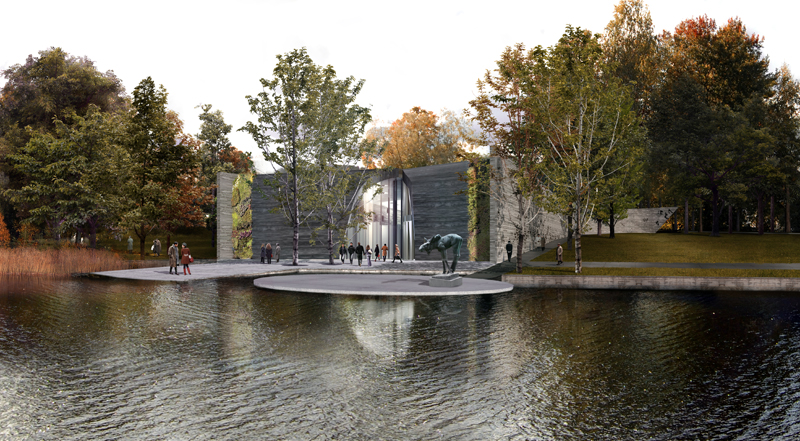
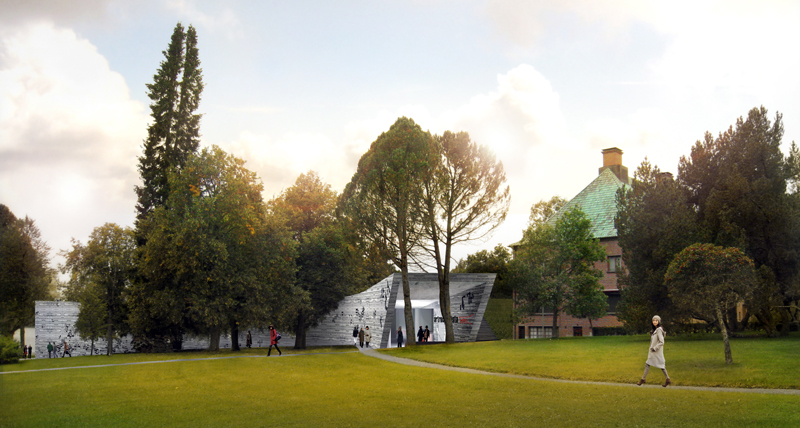
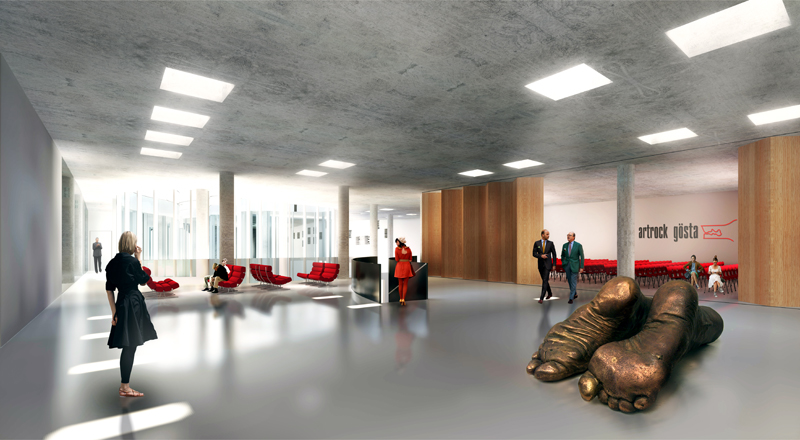
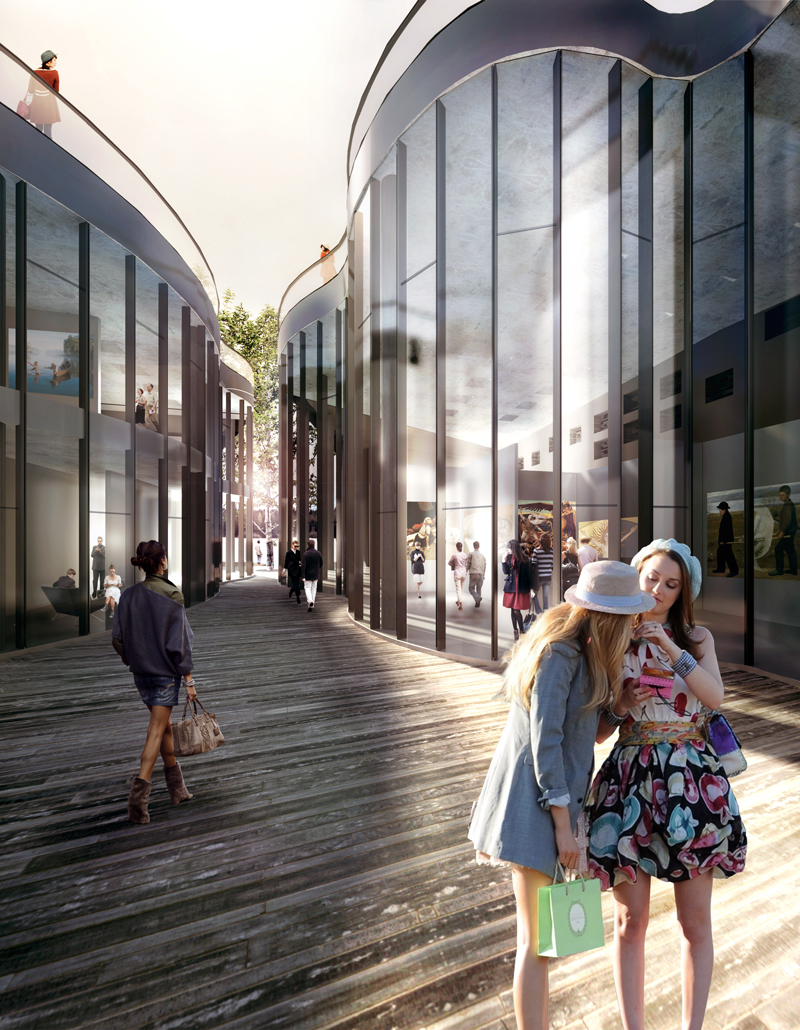
|